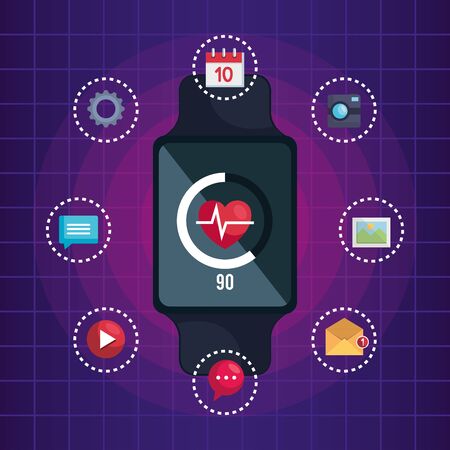Introduction to Continuity of Care in the UK
Continuity of care stands as a cornerstone of the UK’s healthcare ethos, particularly during the crucial transition from hospital to rehabilitation. In a system where patient-centred care is paramount, seamless handovers between different stages of treatment are not just an ideal—they’re essential for achieving optimal health outcomes and maintaining patient trust. General Practitioners (GPs) play a pivotal role in this journey. Their ongoing relationship with patients uniquely positions them to bridge potential gaps in care, ensuring that vital information flows smoothly and that support doesn’t falter once a patient leaves the hospital setting. In the context of the NHS, where resources can be stretched and patient needs are often complex, GPs act as advocates, coordinators, and consistent points of contact. This commitment to continuity means that recovery plans are not just handed over but actively managed, tailored, and reviewed as patients progress towards rehabilitation. Through regular follow-ups, medication reviews, and close communication with multidisciplinary teams, GPs help prevent setbacks and readmissions—demonstrating just how critical their involvement is to the success of post-hospital transitions across the UK.
2. The Role of GPs in Post-Hospital Care
When a patient is discharged from hospital, the journey to full recovery rarely ends at the ward doors. In the UK, General Practitioners (GPs) play a pivotal role in ensuring that this transition is as seamless as possible. Acting as the linchpin between secondary care and community rehabilitation, GPs take on multiple responsibilities to bridge gaps in care and support patients through what can often be a daunting period.
The British Healthcare Pathway: Where GPs Fit In
In the NHS system, a typical patient pathway following hospital discharge involves several coordinated steps:
| Stage | Description | Key Players |
|---|---|---|
| Hospital Discharge | Patient is medically stabilised and ready to leave hospital; discharge summary is prepared. | Hospital team, Discharge planner |
| Handover to GP | Discharge summary and recommendations are sent to the patient’s registered GP. | Hospital team, GP surgery admin |
| Community Rehabilitation Planning | GP reviews discharge notes, assesses ongoing needs, refers to community services as needed. | GP, Community rehab teams (physiotherapists, OTs), Social services |
| Ongoing Support & Monitoring | Regular follow-up appointments and medication reviews; adjustments to care plans. | GP, Practice nurses, Allied health professionals |
The GP’s Bridging Function Explained
The handover from hospital specialists back into community settings is where things can easily fall through the cracks. This is where GPs step up—not just as prescribers or gatekeepers, but as advocates for continuity of care. They interpret complex hospital discharge summaries for both patients and their families, clarify medication changes, and identify potential risks such as early signs of complications or re-admission triggers. Importantly, they also coordinate referrals to local rehabilitation services—whether it’s physiotherapy after orthopaedic surgery or district nursing for wound care—ensuring that no aspect of recovery is left to chance.
Emphasis on Communication and Personalisation
A key feature of British general practice is its emphasis on personalised care. GPs are well-placed to tailor rehabilitation plans based on a patient’s home circumstances, existing medical conditions, and social support networks. By acting as an accessible point of contact, they encourage patients to voice concerns early and help families navigate NHS resources—making the transition from hospital to rehab not just a clinical process, but a truly supportive journey.

3. Communication and Collaboration with Multidisciplinary Teams
Maintaining continuity of care as patients move from hospital to rehabilitation settings is only possible when there is strong, seamless communication between all professionals involved. In the UK, GPs serve as a crucial link, collaborating closely with hospital staff, rehab professionals, and social care teams. This multidisciplinary approach ensures that no aspect of a patient’s care falls through the cracks during this vulnerable transition period.
NHS Best Practice: Structured Handover
One cornerstone of effective collaboration within the NHS is the structured handover process. When a patient is discharged from hospital, GPs receive detailed discharge summaries containing up-to-date information about diagnoses, treatments, medications, and follow-up recommendations. These summaries are critical for GPs to understand what has happened in hospital and to plan ongoing care in the community or rehabilitation setting.
Collaborative Care Planning
GPs don’t work in isolation; they regularly engage in multidisciplinary team (MDT) meetings that bring together hospital consultants, physiotherapists, occupational therapists, district nurses, and social workers. Through these discussions—often held virtually or face-to-face—care plans are reviewed and refined. This ensures everyone is aligned on patient goals, potential complications are flagged early, and any gaps in support are addressed proactively.
Supporting Social and Emotional Needs
It’s not just about medical management—transitioning from hospital can be emotionally daunting for patients and their families. GPs often act as advocates, liaising with social care teams to arrange additional community support or mental health services if needed. By taking this holistic approach, GPs help ensure patients feel supported both physically and emotionally as they adapt to new routines in rehab or at home.
This collaborative culture embedded within NHS practice underpins the effectiveness of continuity of care, keeping the patient’s well-being at the centre throughout every stage of their journey.
Personalised Care Planning and Patient Advocacy
In the British healthcare landscape, personalised care planning is a cornerstone of effective continuity of care, especially when supporting patients as they transition from hospital to rehabilitation. General Practitioners (GPs) play a pivotal role in ensuring that each patient’s journey is tailored to their unique needs and preferences, rather than adopting a one-size-fits-all approach. This patient-centric ethos not only respects individual circumstances but also fosters better clinical outcomes and satisfaction.
The Importance of Patient-Centric Approaches
Patient-centric care means involving patients—and often their families—in every decision about their recovery and ongoing treatment. GPs serve as both coordinators and advocates, actively listening to patients concerns, preferences, and life goals. In the context of the NHS, this often requires balancing medical best practice with respect for patient autonomy and cultural considerations.
Crafting Tailored Care Plans
Each patients care plan should reflect their medical condition, rehabilitation goals, social circumstances, and even personal ambitions. GPs collaborate closely with multidisciplinary teams—physiotherapists, occupational therapists, social workers—to ensure these plans are comprehensive and realistic. Below is an example of how elements of a tailored care plan might be structured:
| Care Plan Element | Example | Stakeholders Involved |
|---|---|---|
| Medical Management | Medication review post-discharge | GP, Pharmacist |
| Rehabilitation Goals | Regaining mobility for daily tasks | Patient, Physiotherapist, GP |
| Social Support | Arranging home adaptations or carer support | Social Worker, Occupational Therapist, Family |
| Mental Wellbeing | Counselling referral if anxiety/depression present | GP, Mental Health Practitioner |
The Role of Patient Advocacy in the UK Setting
Advocacy is about ensuring patients’ voices are heard at every step. GPs in Britain are uniquely positioned to bridge gaps between hospital services and community resources. For example, when discharge summaries are unclear or incomplete, the GP will chase up missing information to prevent errors or delays in follow-up care. Moreover, GPs frequently liaise with local authorities to secure additional support—such as funding for home modifications or access to community rehabilitation programmes—especially for vulnerable or marginalised patients.
Navigating System Complexities on Behalf of Patients
The British healthcare system can be daunting for patients who have just experienced a major illness or surgery. GPs demystify processes such as Personal Health Budgets or Continuing Healthcare assessments, advocating fiercely when patients’ needs do not align neatly with standard commissioning criteria. This practical advocacy ensures smoother transitions and reduces unnecessary readmissions—a win for both patients and the NHS.
5. Challenges and Solutions in the Transition Process
The transition from hospital to rehabilitation is rarely straightforward, particularly within the UK’s complex healthcare landscape. GPs often encounter several barriers while striving to maintain continuity of care for their patients during this vulnerable period.
Common Barriers in the UK System
Information Sharing: One of the most significant challenges is timely and accurate information transfer between hospital teams, community services, and primary care. Discharge summaries can sometimes be delayed or incomplete, leaving GPs without crucial details about medication changes or follow-up plans. This gap can hinder swift decision-making and disrupt ongoing care.
Resource Allocation: With NHS resources stretched thin, accessing appropriate community rehabilitation services or arranging prompt home visits isn’t always feasible. Waiting lists for physiotherapy, occupational therapy, or social support can delay recovery and put extra pressure on families and carers.
Communication Breakdown: Sometimes, there’s a lack of clarity regarding responsibility—who leads on which aspect of care after discharge? This can result in duplication of efforts or, worse, important needs being overlooked altogether.
Pragmatic Strategies Used by GPs
Proactive Communication: Many GPs develop close working relationships with local hospitals and rehab teams. A quick phone call or secure email exchange can bridge information gaps far faster than waiting for formal paperwork. Some practices have designated staff to chase up missing discharge summaries and ensure vital details are added to the patient’s record promptly.
Care Planning Meetings: Where possible, GPs arrange multidisciplinary meetings involving district nurses, therapists, social workers, and family members. These sessions clarify each person’s role and create a shared action plan tailored to the patient’s needs.
Leveraging Community Resources: Experienced GPs know how to make the most of local voluntary organisations and carer networks. They may signpost patients to befriending services, meal delivery schemes, or transport assistance—small interventions that make a big difference during recovery.
Advocacy: When systems fail or delays occur, GPs act as advocates for their patients—chasing referrals, escalating urgent cases, or negotiating for additional support where needed. Their understanding of both the system’s limitations and the patient’s lived experience is crucial in navigating these hurdles.
A Personal Perspective
Having supported countless patients through this transition myself, I’ve learned that persistence and creative problem-solving are just as important as clinical expertise. While systemic barriers exist, a GP’s determination to “join up the dots” can mean the difference between a smooth recovery and an avoidable setback.
6. Real Experiences: Stories from UK GPs and Patients
Learning from the Frontline: GP Perspectives
Dr. Patel, a GP in Manchester, recalls supporting an elderly patient, Mrs. Johnson, who was discharged after a stroke. With the discharge summary arriving late, Dr. Patel proactively called the hospital’s rehab team to clarify medication changes and mobility recommendations. “Clear communication made all the difference,” he says. By arranging regular check-ins and liaising with district nurses, Dr. Patel ensured Mrs. Johnson didn’t fall through the cracks during her transition home.
Patient Voices: Navigating Uncertainty
John, a 54-year-old recovering from major surgery, describes feeling anxious after leaving hospital care. “My GP called within two days to review my medications and answer questions I hadn’t thought to ask in hospital,” he shares. This reassurance helped John manage his new routine and gave him confidence to contact his surgery if he had concerns, knowing his GP was up-to-date with his case.
Teamwork Makes Transition Smoother
In rural Cumbria, Dr. Williams highlights the importance of multi-disciplinary teamwork: “We set up a virtual meeting involving physiotherapists, occupational therapists, and social workers before discharge.” This approach allowed for a tailored rehab plan and seamless handover. Feedback from patients showed they felt more supported and less overwhelmed when everyone was ‘singing from the same hymn sheet’.
Lessons Learned: Tips from Experience
Both GPs and patients agree on several practical tips: keep communication open—don’t be afraid to ask questions or clarify uncertainties; schedule timely follow-up appointments; and ensure every patient has a written summary of their care plan. Most importantly, recognise that every transition is unique—listening to patients’ lived experiences helps GPs adapt support to individual needs.
7. Looking Forward: Innovations and Best Practice
Continuity of care is evolving rapidly, and British GPs are at the forefront of adopting new strategies to support patients transitioning from hospital to rehab. Recent years have seen a surge in digital tools designed to streamline communication between primary and secondary care, making it easier for GPs to access discharge summaries, medication updates, and rehab plans in real-time. Innovations such as the NHS app, integrated electronic health records (EHRs), and secure messaging platforms have significantly improved the sharing of vital information. These technologies not only reduce administrative delays but also empower patients by giving them more control over their own health data.
Personalised Care Planning
There has been a marked shift towards personalised care planning, ensuring that each patient’s unique needs are met during their recovery journey. GPs now collaborate closely with multidisciplinary teams, including physiotherapists, occupational therapists, and social workers, to develop tailored rehab pathways. This team-based approach is supported by digital case management systems that allow everyone involved to track progress and update goals collaboratively.
Virtual Consultations and Remote Monitoring
The rise of virtual consultations has transformed post-discharge follow-up. Video appointments and remote monitoring tools enable GPs to check in regularly with patients who may struggle to attend in-person clinics, whether due to mobility issues or geographic barriers. Wearable devices and home monitoring kits feed data directly back to GPs, allowing for timely interventions if a patient’s condition changes.
Future Trends: Data-Driven Insights and Patient Empowerment
Looking ahead, artificial intelligence (AI) and advanced analytics are set to play a greater role in continuity of care. AI can help identify patients at higher risk of complications or readmission, prompting proactive support from the GP team. Meanwhile, patient empowerment remains central: future best practice will likely see even greater emphasis on shared decision-making, self-management education, and inclusive digital services that cater to all backgrounds.
Ultimately, the future of continuity of care for patients moving from hospital to rehab in the UK rests on blending technology with the traditional strengths of general practice—relationship-building, clinical intuition, and holistic support. As these innovations become standard practice, British GPs will continue to lead the way in delivering safe, seamless transitions that prioritise patient wellbeing at every step.


